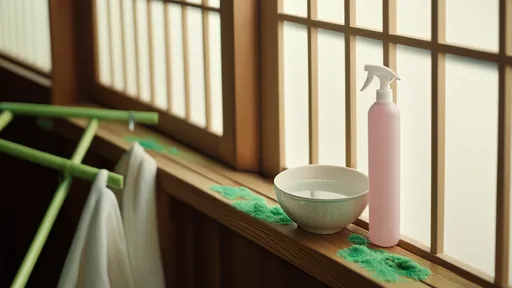In recent years, the practice of nasal irrigation with saline solutions has gained traction as a simple yet effective method for combating the discomfort caused by dust and airborne pollutants. Commonly referred to as "dust nasal washing," this technique involves flushing the nasal passages with a saline solution to remove irritants, allergens, and particulate matter. While it may sound like a modern wellness trend, the roots of nasal irrigation trace back centuries, with origins in traditional Ayurvedic and yogic practices. Today, it has evolved into a scientifically supported method for maintaining respiratory health, particularly in regions prone to sandstorms or high levels of air pollution.
The Science Behind Dust Nasal Washing
The human nasal cavity is lined with tiny hair-like structures called cilia, which work alongside mucus to trap dust, bacteria, and other foreign particles. However, when exposed to excessive dust or pollution, this natural filtration system can become overwhelmed. This is where saline nasal irrigation comes into play. The isotonic solution—typically a mixture of sterile water and salt—helps to loosen and flush out trapped particles while maintaining the natural moisture balance of the nasal mucosa. Studies have shown that regular nasal irrigation can reduce inflammation, improve mucociliary clearance, and even alleviate symptoms of chronic sinusitis.
One of the key benefits of dust nasal washing is its ability to provide immediate relief. For individuals living in arid or industrialized areas, where dust storms or smog are frequent, this practice can be a game-changer. Unlike oral medications or nasal sprays, which often come with side effects or the risk of dependency, saline irrigation is a drug-free alternative. It’s also remarkably accessible; all you need is a neti pot or a squeeze bottle and the right saline mixture. However, it’s crucial to use distilled or previously boiled water to avoid the risk of infections, as tap water may contain harmful microorganisms.
Cultural and Historical Context
While dust nasal washing has gained popularity in Western wellness circles in recent decades, its origins are deeply rooted in ancient traditions. In Ayurveda, the practice is known as "jala neti" and is considered a vital part of daily hygiene, much like brushing one’s teeth. Yogis have long used neti pots to clear the nasal passages before meditation or pranayama (breath control exercises), believing that a clean nasal pathway enhances mental clarity and spiritual focus. Similarly, traditional Chinese medicine incorporates nasal rinsing as a way to balance qi, or life energy, and prevent respiratory ailments.
In modern times, the practice has been adapted to address contemporary challenges, such as urban air pollution and climate change-induced dust storms. Countries like China and India, where air quality is often compromised, have seen a surge in the use of nasal irrigation devices. Even in regions like the Middle East, where sandstorms are a common occurrence, dust nasal washing has become a routine part of personal care. This cross-cultural adoption underscores the universal need for effective respiratory health solutions in an increasingly polluted world.
Practical Considerations and Safety Tips
Despite its simplicity, dust nasal washing requires proper technique to be effective and safe. The saline solution should be isotonic—meaning it has the same salt concentration as the body’s fluids—to avoid irritation. A common recipe involves mixing one teaspoon of non-iodized salt with one pint of lukewarm distilled water. Some people add a pinch of baking soda to neutralize acidity, though this is optional. The irrigation device, whether a neti pot or a bulb syringe, should be cleaned thoroughly after each use to prevent bacterial growth.
Timing is another factor to consider. For those exposed to high levels of dust or pollution, rinsing the nasal passages once or twice a day can be beneficial. However, overuse may disrupt the natural microbiome of the nasal cavity, so moderation is key. Individuals with certain medical conditions, such as chronic ear infections or a compromised immune system, should consult a healthcare provider before starting nasal irrigation. Pregnant women and young children may also need tailored advice to ensure the practice is safe for them.
The Future of Dust Nasal Washing
As environmental concerns continue to escalate, the relevance of dust nasal washing is likely to grow. Researchers are exploring advanced formulations of saline solutions, including those infused with antimicrobial agents or anti-inflammatory compounds, to enhance the benefits. Portable nasal irrigation devices are also being designed for travelers or outdoor workers who need on-the-go solutions. Moreover, public health campaigns in polluted cities are beginning to promote nasal irrigation as a preventive measure, much like handwashing or wearing masks.
What makes dust nasal washing particularly compelling is its blend of simplicity and efficacy. In a world where high-tech medical interventions often dominate the conversation, this age-old practice offers a low-cost, sustainable alternative. Whether you’re a city dweller grappling with smog or a desert resident facing frequent sandstorms, incorporating nasal irrigation into your daily routine could be a small but impactful step toward better respiratory health. As with any wellness practice, consistency and proper technique are the keys to reaping the full benefits.

By /Aug 15, 2025

By /Aug 15, 2025

By /Aug 15, 2025

By /Aug 15, 2025

By /Aug 15, 2025

By /Aug 15, 2025

By /Aug 15, 2025

By /Aug 15, 2025

By /Aug 15, 2025

By /Aug 15, 2025

By /Aug 15, 2025

By /Aug 15, 2025

By /Aug 15, 2025

By /Aug 15, 2025

By /Aug 15, 2025

By /Aug 15, 2025

By /Aug 15, 2025

By /Aug 15, 2025

By /Aug 15, 2025

By /Aug 15, 2025